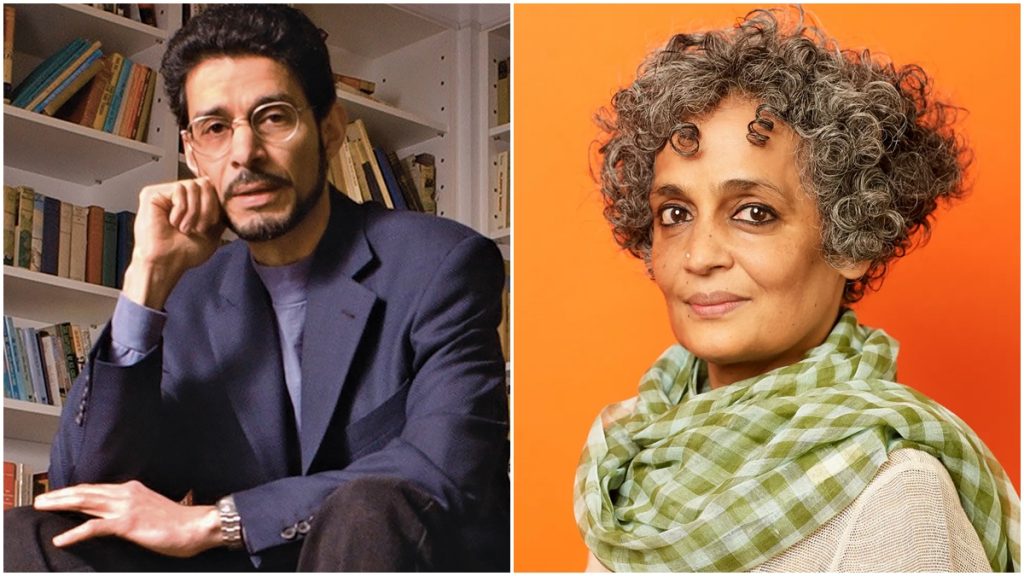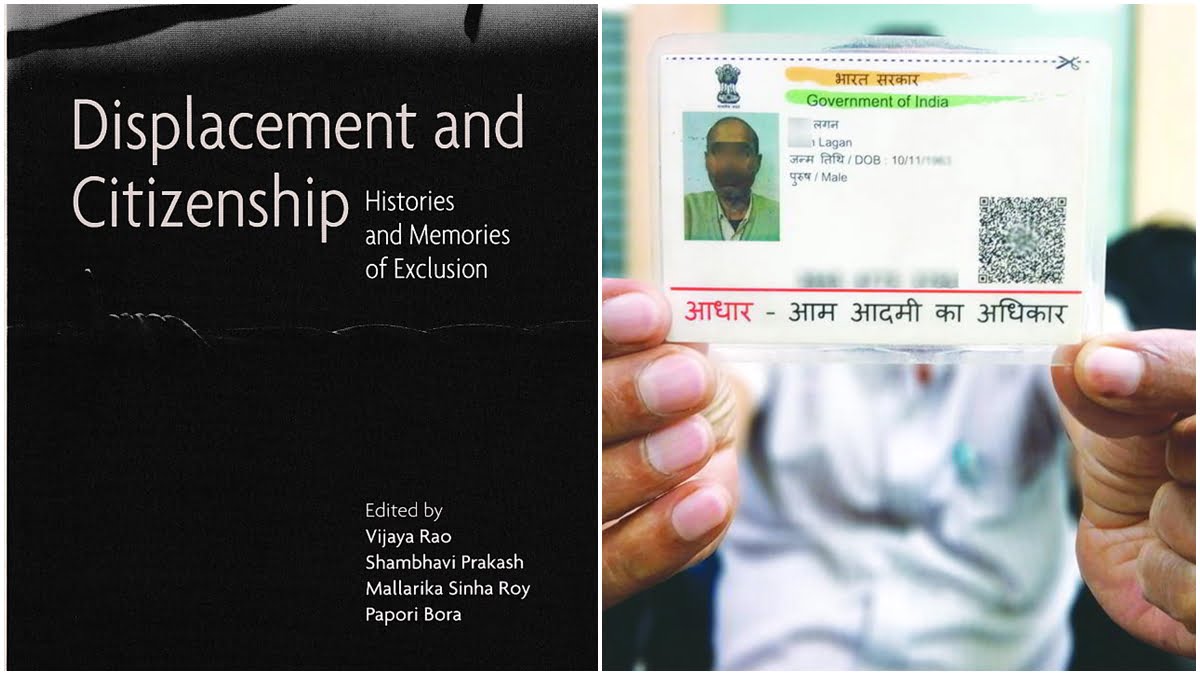Though for most of us what it means to be a citizen became a crucial sociopolitical exercise only last year, the present government’s much-loved Jawaharlal Nehru University (JNU) was running a project ‘Traces of the Global: Memory, Displacement, Cultural Citizenship’ for the past five years.
Book: Displacement and Citizenship: Histories and Memories of Exclusion
Editors: Vijaya Rao, Shambhavi Prakash, Mallarika Sinha Roy and Papori Bora
Publisher: Tulika Books, 2020
Displacement and Citizenship: Histories and Memories of Exclusion edited by Vijaya Rao, Shambhavi Prakash, Mallarika Sinha Roy and Papori Bora (2019, Tulika Books) is a product of the project. This scholarly book — a compilation of reflective, argumentative, and investigative essays — describes how memory is the site where cultural citizenship is constructed.
From displacement, refugeehood to reconstruction of the sites of memory and its study through the primary lens of gender and caste, Displacement and Citizenship is an essential read for a post-Shaheen Bagh India.
From displacement, refugeehood to reconstruction of the sites of memory and its study through the primary lens of gender and caste, Displacement and Citizenship is an essential read for a post-Shaheen Bagh India. The essays in this book discuss, interrogate, and analyse how the “political organisation of space intersects with memories, rights and everyday living.” These essays are, to quote the book’s preface, “more than mere cautionary tales, as they explore the ways in which exclusion from the category of ‘citizen’ is constructed over and above the changing legal frameworks of the state, by a society that creates the state and which is in turn formed by the policies adopted by the state.”
Also read: Book Review: In The Belly Of The River: Tribal Conflicts By Amita Baviskar
Role of memory
“Memory is a choice,” Ocean Vuong writes in his fantastic autobiographical novel On Earth We’re Briefly Gorgeous. It can be an individualistic, collective, and nationwide choice to preserve, protect or abandon memory and treat it as yet another archaeological site, which requires preservation through reconstruction.
My grandfather once told me, because of reasons best known to him, why the village where we come from in the Hathras district is called Tilothi. “Thirty goddesses were worshipped in our village, which is why it was called Teesauthi, which was corrupted and became Tilothi.”
If he’d have not told me this, then this piece of information of cultural importance, which is not important for anyone for what do one care about some village anyway, would be lost. I was part of that intergenerational transmission of meaningful information; a participant in a dialogue, which could’ve helped explain my past, but, which is, in turn, as an essay by Madhu Sahni in Displacement and Citizenship notes, an implication that “in retrieving this memory, the future will be fashioned.”
We need such stories and mechanisms to preserve, protect and propagate them to future generations. But the question is: Who gets to do that? Only people in power, enjoying a position of systematic and societal privilege.
In the essay “Life, Resistance and Resignation: Testimonial Lessons of Dispossession,” Udaya Kumar, takes the example of documentary movie, “To die for land — the ultimate sacrifice” on the Chengara Land Struggle directed by the late Indian documentary filmmaker C. Saratchandran to explain what we lose when we don’t have our ears to the ground.
Many of the upper-caste members and leaders of the struggle identified people and directed them to make the ‘ultimate sacrifice’ to protect the land, which raises important questions. One of them, which Kumar asks: “How do we understand political agency in its proximity to sites of desubjectification?” Dalits have no or a few agencies to tell their stories. When most narratives are told by upper-caste writers, the narratives of Dalits go mute. In her essay, “Rewriting Dalit Self-Narratives in English Translation,” Chitra Harshvardhan mentions Arundhati Roy and Rohinton Mistry as cases in point. Because “cultural texts carry enormous purchase on civil society,” it is important to empower marginalised voices to tell those narratives.

Claiming their space
While no one is competing for a better tragedy, it’s interesting to note that many get reported and others don’t. Such is the story of Togorbala, a Dalit woman, who Ekata Bakshi writes in Displacement and Citizenship, during Partition “lost ‘homes’ (both natal and affinal) with tin roofs and walls stamped all over with acute poverty.” Her loss “stand[s] in sharp contrast to this idea of bountiful home in upper-caste narratives.” For her, the partition also “meant the loss of a world of female relationships she could count upon.”
Such stories are from the northeast, which don’t seem to enter any mainland narrative. In one of the essays, it’s articulated how the news of the elections, in fact, did reach mainland India, but it forgot to mention that people were forced to vote. Too much for the “free and fair election” system in the world’s largest democracy it seems.
In an analysis of Bitter Wormwood by Easterine Kire and Drums for Rancas by Manuel Scorza, Lipi Biswas Sen reflects on fights led by indigenous communities of Peru and Nagaland. She finds it crucial “to understand why the communities need to recuperate and preserve their memories, especially when one talks about the struggles of the subaltern group against the hegemonic one.” This attempt is made by the two old men in Kire’s book who are reconstructing memories of the Naga struggle, making a point that the “death of the body is not the death of memories.”
Investigating the formation of a refugee identity and the mechanics of displacement, Shambhavi Prakash’s work on the modalities of representation through five German documentaries — Alles Gut, Can’t Be Silent, Gestrandet, Land in Sicht and Wilkommen auf Deutsch — reveals the directors’ “focus is on identification of easily recognizable universal humanity.”
In her assessment, she writes: “While some documentaries have used experimental approaches to explore the issues at stake in a complex manner, many others have privileged a more conventional observational mode to keep the focus on humanitarian and victimization frames calling for a more compassionate engagement with refugees.”
For such accurate representation of power dynamics and changing positions of privilege and vulnerability, I’d also recommend Label Me, where a Syrian refugee denying his sexuality and hiding it under the garb of ‘having sex with men for money’ is shown struggling to be in a refugee-tolerant Germany.
Also read: How Are The CAA Protests A Crucial Moment In Southasian Feminism?
The cost of silence
It’s a tremendous civilisational loss if we lose rich narratives like those reconstructed in this book. As we’re shaped by our understanding of the past, which, as we understand it right now, comes from the historians who’re privileged enough to write and chose to write about one thing and not the other, it becomes crucial to appreciate such retellings.
In “Silence and Testimony in Huma R. Kidwai’s The Hussaini Alam House (2012),” Nazia Akhtar writes about self-censorship and how the “Partition-related upheavals have been neglected and/or willfully erased by India’s nationalist historiography and culture, perhaps because, the experiences of Hyderabadi Muslims critically interrogate the carefully fashioned image of a democratic and tolerant Indian nation-state.”
There’s this politics of remembrance, which can make an event sound like ‘it’s no one’s fault, so it’s everyone’s fault.’ In an essay dealing with the subversion of the remembrance of the Namibian Genocide, Sunil Choudhury writes how “Holocaust is a ‘shared European trauma’, but Namibian genocide tells the interplay of institutions contributing to the culture of remembrance.”
In Displacement and Citizenship, Pallavi investigates the “fictional representations of rape and sexual violence against women perpetuated by the Red Army in the Battle of Berlin in 1945;” and the silence on the mass rapes, which Helke Sander calls ‘a real scandal,’ also forces us to ponder upon a similar scenario closer home.
In Displacement and Citizenship, Pallavi investigates the “fictional representations of rape and sexual violence against women perpetuated by the Red Army in the Battle of Berlin in 1945;” and the silence on the mass rapes, which Helke Sander calls ‘a real scandal,’ also forces us to ponder upon a similar scenario closer home. The systematical silence of and the immunity that the Indian Army reportedly enjoyed in the Kunan and Poshpora 1991 mass rapes in the Valley.
From one forgotten tragedy to another in Jammu, Arshi Javid “tries to find the political implications of not engaging with sources which could be contradictory to the established narrative.” She argues if “there [is] a danger that the messiness of the past might bring to the fore a story that challenges established knowledge?”
Through Rabia’s story — the teenage daughter of an Imam Sahib who was abducted — she argues how “even [the] intergenerational transmission of knowledge pertaining to events in 1947 was not encouraged.” Like this, an erasure of a different kind, is also present in another Displacement and Citizenship essay dedicated to the participation of women in the Muktijuddho, the Bangladesh War of Liberation in 1971.
Vijaya Rao’s piece on the Pratam festival, where he cites James Young, who claims that ‘sites of memory do not remember by themselves — they require the active agency of individuals and publics,’ reminds us how urgently we need people interested in and the mechanics of preserving memories of exclusion, oppression and displacement. It becomes more than necessary to do it now as the attacks on preserving such narratives are growing in number and pace with each passing day.




